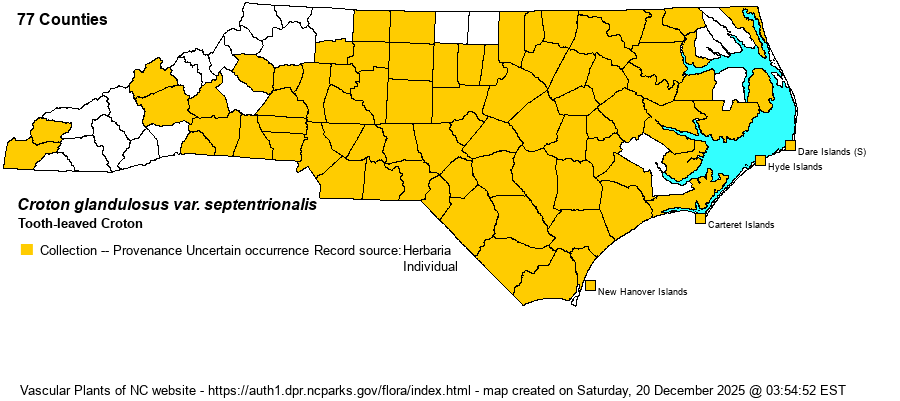| taxonName | relationship | relatedTaxonName | relatedTaxonRefText | relComments |
|---|
|
|
|
|
| Croton glandulosus var. septentrionalis | ? | Croton glandulosus var. septentrionalis | Gleason and Cronquist (1991) | |
| Croton glandulosus var. septentrionalis | ? | Croton glandulosus var. septentrionalis | Fernald (1950) | |
| Croton glandulosus var. septentrionalis | ? | Croton glandulosus var. septentrionalis | Gleason (1952) | |
| Croton glandulosus var. septentrionalis | ? | Croton glandulosus var. septentrionalis | | |
| Croton glandulosus var. septentrionalis | ? | Croton glandulosus var. septentrionalis | Radford, Ahles, and Bell (1968) | |
| Croton glandulosus var. septentrionalis | ? | Croton glandulosus var. septentrionalis | Wofford (1989) | |
| Croton glandulosus var. septentrionalis | > | Croton glandulosus var. septentrionalis | | |
| Croton glandulosus var. septentrionalis | > | Croton glandulosus var. septentrionalis | Small (1933, 1938) | |
| Croton glandulosus var. septentrionalis | > | Croton glandulosus var. angustifolius | | |
| Croton glandulosus var. septentrionalis | > | Croton glandulosus var. angustifolius | Small (1933, 1938) | |
| Croton glandulosus var. septentrionalis | > | Croton glandulosus var. simpsonii | | |
| Croton glandulosus var. septentrionalis | > | Croton glandulosus var. simpsonii | Small (1933, 1938) | |
| Croton glandulosus var. septentrionalis | < | Croton glandulosus | | |
| Croton glandulosus var. septentrionalis | < | Croton glandulosus | Flora of West Virginia | |
| Croton glandulosus var. septentrionalis | < | Croton glandulosus var. glandulosus | Wunderlin & Hansen Flora of Florida (3) | |
| Source: Weakley's Flora |

